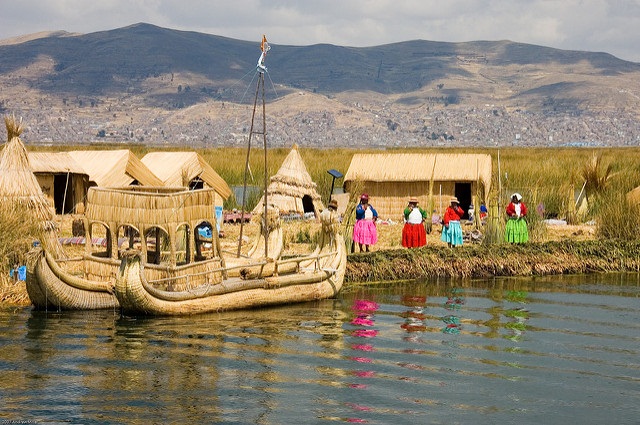South America is home to lush mountains, roaring waterfalls and one of the most stunning lakes out there: Lake Titicaca. This body of water lies at the basin of the Andes Mountains, right on the border of Peru and Bolivia. Recognized as the highest lake in the world (a whopping 12,470 feet above sea level) and the largest freshwater lake in South America, it has been a major tourist destination for years. But tourists aren’t the only ones who reap the benefits of South America’s most prized lake. The diverse ecosystem and dozens of unique islands (more on that later) provide a home to thousands of people and species. However, in recent years officials have noticed an influx of pollution at this incredible site. Thankfully, efforts to preserve Lake Titicaca’s natural beauty are well underway…
Peru and Bolivia have joined forces to implement a $500 million plan to clean up their shared lake through the year 2025. This large-scale project involves installing sanitation services in nearby villages that are affected by the lake’s pollution. After the residential areas are taken care of the operation will transition and focus on reducing pollution in areas where the land is used for mining, livestock, and agriculture.
Back to those dozens of unique islands…Thousands of people have settled down on Lake Titicaca’s 41 islands. Some are big, some are small and each is more breathtaking than the next. When I mention the word “island” you may picture the Greek islands, Hawaii, or maybe even Manhattan if you’re currently craving some classic New York pizza. But the most famous cluster of islands on Lake Titicaca, the Uros Islands, is an island chain unlike any other.
The Uros Islands are made entirely out of reeds. And I’m not just talking about the base of the island. Almost everything from the houses, to the boats, to medicine, is created using dried totora reeds—a natural resource that is abundantly available. The reed plants stretch from the bottom of the lake up to the surface, where they naturally interweave and form the foundation for the island. The residents of the Uros, known as the Uru, maintain the stability of the island by thickening the ground with new layers of reeds every three months or so.
Thanks to the Lake Titicaca clean-up, places like the Uros Islands will be preserved in the purest form for years to come, and residents and visitors alike can enjoy the unique beauty of the islands.
Take your students on the adventure of a lifetime in Peru!
Related articles

